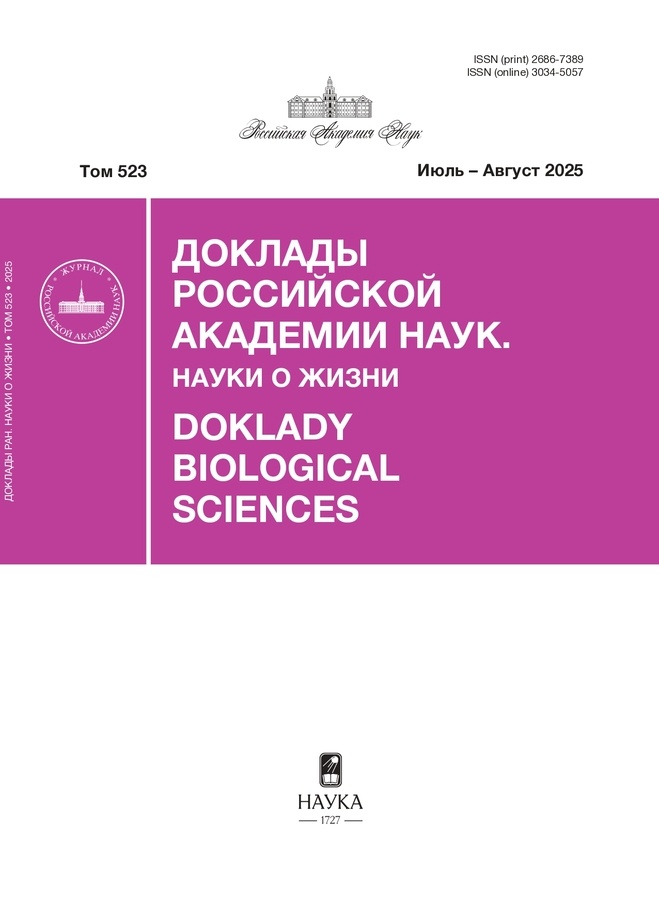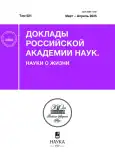Модульные нанотранспортеры, содержащие монободи к Keap1, способны уменьшать токсическое действие парацетамола на печень мышей
- Авторы: Храмцов Ю.В.1, Розенкранц А.А.1,2, Уласов А.В.1, Сластникова Т.А.1, Лупанова Т.Н.1, Алиева Р.Т.1, Георгиев Г.П.1, Соболев А.С.1,2
-
Учреждения:
- Институт биологии гена Российской академии наук
- Московский государственный университет им. М.В. Ломоносова
- Выпуск: Том 521, № 1 (2025)
- Страницы: 225-228
- Раздел: Статьи
- URL: https://vestnik.nvsu.ru/2686-7389/article/view/684012
- DOI: https://doi.org/10.31857/S2686738925020109
- ID: 684012
Цитировать
Полный текст
Аннотация
Ранее нами был создан модульный нанотранспортер (МНТ), содержащий монободи к Keap1 – внутриклеточному белку-ингибитору фактора транскрипции Nrf2, контролирующего защиту клеток от окислительного стресса, и способный в гепатоцитах взаимодействовать с Keap1 и защищать эти клетки от действия перекиси водорода. В качестве модели для исследования противотоксического действия данного МНТ использовали окислительное повреждение печени парацетамолом. Внутрибрюшинная инъекция мышам парацетамола приводила к повышению уровня аланинаминотрансфразы и аспартатаминотрансферазы в крови, а также к отеку печени. Значительное снижение уровня этих ферментов в крови, наряду с уменьшением отека печени, наблюдалось после предварительного внутривенного введения МНТ за 2 часа до инъекции парацетамола. Полученные результаты могут послужить основой для создания препаратов, направленных на лечение болезней, связанных с окислительным стрессом.
Ключевые слова
Полный текст
Об авторах
Ю. В. Храмцов
Институт биологии гена Российской академии наук
Автор, ответственный за переписку.
Email: alsobolev@yandex.ru
Россия, Москва
А. А. Розенкранц
Институт биологии гена Российской академии наук; Московский государственный университет им. М.В. Ломоносова
Email: alsobolev@yandex.ru
Россия, Москва; Москва
А. В. Уласов
Институт биологии гена Российской академии наук
Email: alsobolev@yandex.ru
Россия, Москва
Т. А. Сластникова
Институт биологии гена Российской академии наук
Email: alsobolev@yandex.ru
Россия, Москва
Т. Н. Лупанова
Институт биологии гена Российской академии наук
Email: alsobolev@yandex.ru
Россия, Москва
Р. Т. Алиева
Институт биологии гена Российской академии наук
Email: alsobolev@yandex.ru
Россия, Москва
Г. П. Георгиев
Институт биологии гена Российской академии наук
Email: alsobolev@yandex.ru
академик РАН
Россия, МоскваА. С. Соболев
Институт биологии гена Российской академии наук; Московский государственный университет им. М.В. Ломоносова
Email: alsobolev@yandex.ru
Россия, Москва; Москва
Список литературы
- Bellezza I., Giambanco I., Minelli A., et al. // Acta Mol. Cell Res. 2018. V. 1865(5). P. 721–733.
- Hayes J.D., Dinkova-Kostova A.T. // Trends Biochem. Sci. 2014. V. 39(4). P. 199–218.
- Ulasov A.V., Rosenkranz A.A., Georgiev G.P., et al. // Life Sci. 2022. V. 291. 120111.
- Robledinos-Anton N., Fernandez-Gines R., Manda G., et al. // Oxid. Med. Cell Longev. 2019. V. 2019. 9372182.
- Ngo V., Duennwald M.L. // Antioxidants. (Basel). 2022. V. 11(12).
- Taguchi K., Kensler T.W. // Arch. Pharm. Res. 2020. V. 43(3). P. 337–349.
- Patra U., Mukhopadhyay U., Sarkar R., et al. // Antivir. Res. 2019. V. 161. P. 53–62.
- Olagnier D., Farahani E., Thyrsted J., et al. // Nat. Commun. 2020. V. 11. 4938.
- Khramtsov Y.V., Ulasov A.V., Slastnikova T.A., et al. // Pharmaceutics. 2023. V. 15. 2687.
- Khramtsov Y.V., Ulasov A.V., Rosenkranz A.A., et al. // Pharmaceutics. 2024. V. 16. 1345.
- Lee W.M. // Hepatol. 2017. V. 67. P. 1324–1331.
- McGill M.R., Williams C.D., Xie Y., et al. // Toxicol. Appl. Pharmacol. 2012. V. 264. P. 387–394.
- Vorobyeva A., Bragina O., Altai M., et al. // Contrast. Media Mol. Imaging. 2018. V. 2018. 6930425.
- Steffens M. G., Kranenborg M.H., O.C. Boerman O.C., et al. // Cancer Biother. Radiopharm. 1998. V. 13. P. 133–139.
- Ferris T., Carroll L., Jenner S., et al. // J. Labelled Comp Radiopharm. 2021. V. 64. P. 92–108.
- Bruinstroop E., van der Spek A.H., Boelen A. // Eur. Thyroid J. 2023. V. 12. e220211.
- Dohan O., De la Vieja A., Paroder V., et al. // Endocr. Rev. 2003. V. 24. P. 48–77.
- Shen Z., Wang Y., Su Z., et al. // Chem. Biol. Interact. 2018. V. 282. P. 22–28.
Дополнительные файлы










